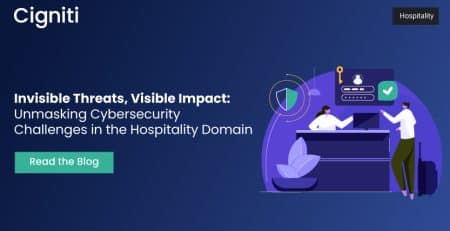Navigating the Nexus: Geopolitics, Cyber Threat Landscape, and Defensive Strategies
Geopolitical Instability Raises Threat of ‘Catastrophic Cyberattack in Next Two Years’- Global Cybersecurity Outlook 2023 – World Economic Forum
As the world’s attention remains fixated on the unfolding events in Taiwan, Ukraine & Iran, it’s crucial to recognize that the theater of battle extends far beyond physical borders into the shadowy area of cybersecurity. Geopolitical conflicts act as crucibles for innovation in nefarious activities, with cyberattacks no exception. Nations boasting the world’s most advanced cyber capabilities typically keep them shrouded in secrecy. However, these clandestine methods are unveiled when interstate tensions escalate, offering a dangerous toolkit for cybercriminals worldwide to exploit and wreak havoc.
In a chilling example of the interconnected world of cyber warfare, the NotPetya malware was unleashed in June 2017, its initial assault aimed squarely at Ukraine’s vital infrastructure. Yet, the ripples of this digital disruption soon extended far beyond, sweeping through France, Germany, Italy, Poland, Russia, the United Kingdom, the United States, and Australia. The fallout? Billions of dollars in damages, leaving a stark reminder of the devastating power of digital weaponry. Cyber warfare knows no borders, and the world watches as innovation turns malevolent.
Are Cyber Attacks Profit-Driven in Times of Turmoil
Geopolitical assaults transcend the field of ransomware and aren’t solely profit-driven. Threat actors may have multifaceted motivations, making it imperative for enterprises to fortify their defenses in the face of the unknown.
Unveiling the secrets: Breaches lead to unauthorized access to vital business data, such as financial records and customer information, exposing organizations to potential exploitation.
The personnel peril: Employee records, a treasure trove of sensitive personal data, become vulnerable, amplifying the risk of identity theft and privacy breaches.
The heist of innovation: Cyber espionage orchestrates a grand theft of intellectual property, trade secrets, and invaluable research, dealing devastating blows to manufacturing, energy, and pharmaceutical giants in a staggering heist of trillions.
Covert missions: Espionage infiltrates digital borders, seeking classified information and conducting subtle surveillance that compromises both national security and corporate interests.
Web of deceit: The sinister web of social interference sows discord and confusion, manipulating public sentiment and creating chaos in the digital arena.
Digital sabotage: Cyberattacks disrupt businesses in multifaceted ways, employing malware infestations and DDoS onslaughts to dismantle online services, jeopardizing productivity and reputation.
Strategic rivalry: Competitors may resort to clandestine tactics to undermine and seize control of a rival’s business, instigating fierce corporate warfare.
Brand betrayal: Cyber threats tarnish an enterprise’s very essence, inflicting lasting damage to its brand and reputation and shaking the trust of customers and stakeholders alike.
Role of Leadership in Containing the Crisis
In the wake of the Ukraine crisis, enterprises adopted various cybersecurity strategies. Some focused on identifying and thwarting known Russian threat tactics and indicators. Others concentrated on strengthening their threat intelligence and incident response capabilities. Meanwhile, efforts to raise employee awareness and improve communication with executives about emerging threats were also evident.
These initiatives, although commendable, predominantly revolved around technological enhancements. As cyber-conflict evolves, it becomes increasingly apparent that the issue transcends mere security concerns and must be embraced as a multifaceted business challenge, necessitating strategic involvement from leadership at all organizational levels.
“Crises place an additional premium on risk-based decision-making, and business leadership must be involved at every level. Executives who make defensible, risk-informed choices are more likely to navigate their organizations with resilience, from response through recovery,” says Paul Proctor, Distinguished Vice President Analyst at Gartner.
Boards should promptly assess their cyber resilience, pinpointing vulnerabilities for CEO and senior management awareness. Facilitating tabletop exercises with CISOs offers invaluable insights into threats and defense strategies, empowering swift and informed decision-making at the highest levels.
Leadership in Crisis: 7 Questions to Stay Afloat and Ahead
| Global Vigilance | How secure are our systems, personnel, and assets in countries targeted for cyberattacks? Are we closely monitoring the connections to and from these nations within our corporate infrastructure? |
| Dismantling the Grid | What’s our plan if we decide to disconnect our systems? How swiftly can we execute this without disrupting our operations and team? |
| Incident Readiness | Do we possess a robust incident response playbook? When was it last tested? Have we outlined specific actions in the event of hostilities, and if so, what are they? |
| Real-Time Threat Detection | How sophisticated are our threat detection capabilities? Can we spot intrusions in real-time, and are we effectively monitoring the intersection between our IT systems and operational technology? |
| Government Collaborations | Do we have strong ties with national or local government agencies specializing in cybersecurity? Have we sought additional intelligence from them? Are we actively engaged in industry groups that share vital information with the government, and how do we discern fact from the disinformation used by nation-state actors? |
| Employee Guardians | How well do our employees shield us against phishing and social engineering and guard against the theft of account credentials? When was our last system scan to uncover unauthorized access? |
| Cyber Resilience | Assess our foundational cybersecurity capabilities. What’s the state of our organization’s cyber hygiene, and are we fortified to withstand the evolving threats of the digital age? |
Why Cigniti?
Cigniti leads cybersecurity with AI-driven threat intelligence and behavior analytics, adapting to an ever-changing threat landscape. They prioritize “cyber assurance,” ensuring continuous testing and optimizing security measures to combat modern threats. Their innovation extends to Dev-Sec-Ops, seamlessly integrating security into the DevOps lifecycle for early vulnerability detection.
Proactivity defines Cigniti’s approach to threat intelligence, information sharing, and actively participating in cybersecurity communities and industry partnerships. This commitment keeps clients equipped with the latest security measures. Cigniti’s solutions are adaptable and tailored to meet the unique needs of organizations, whether small enterprises or multinational corporations. Cigniti is a resolute guardian of valuable assets and sensitive information in an ever-evolving cyber landscape.
Need help? Contact our Cybersecurity assurance experts to learn more about the cyber threat landscape and defensive strategies.





Leave a Reply